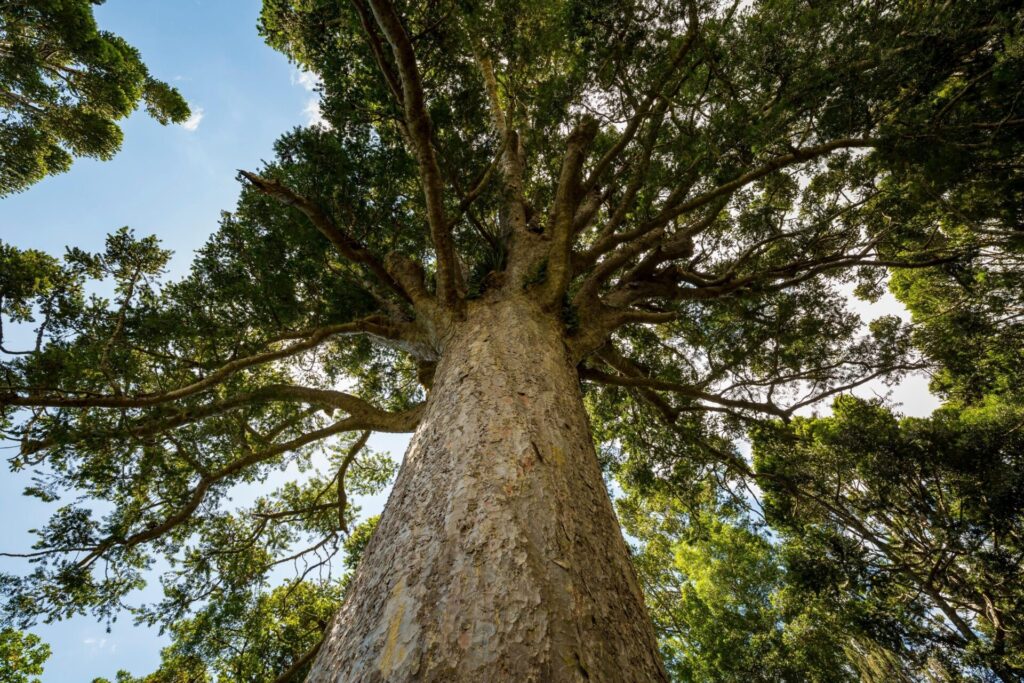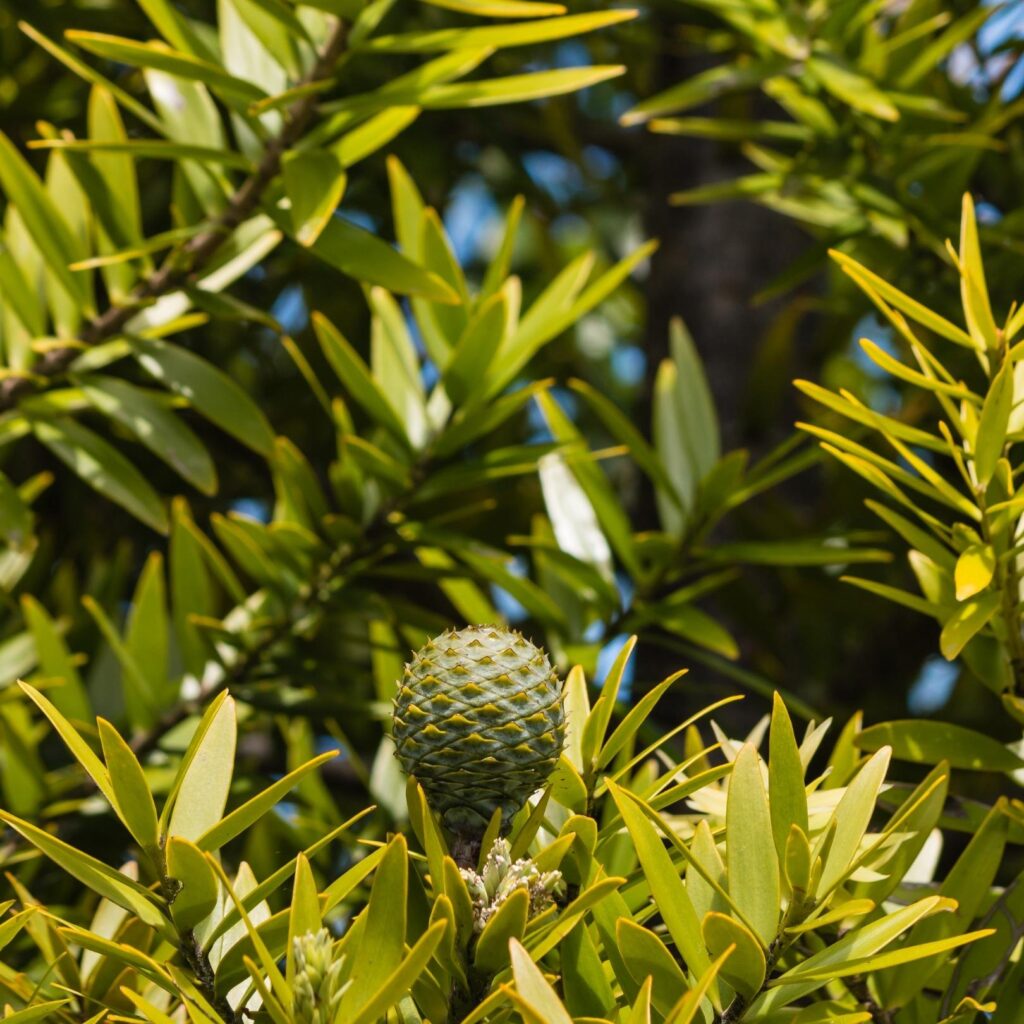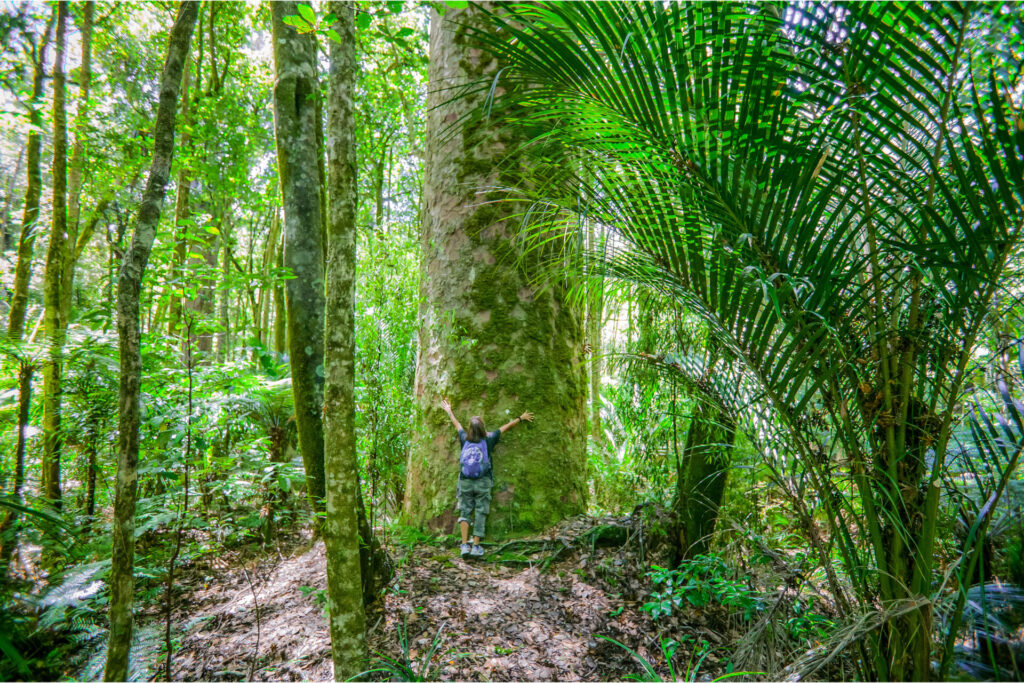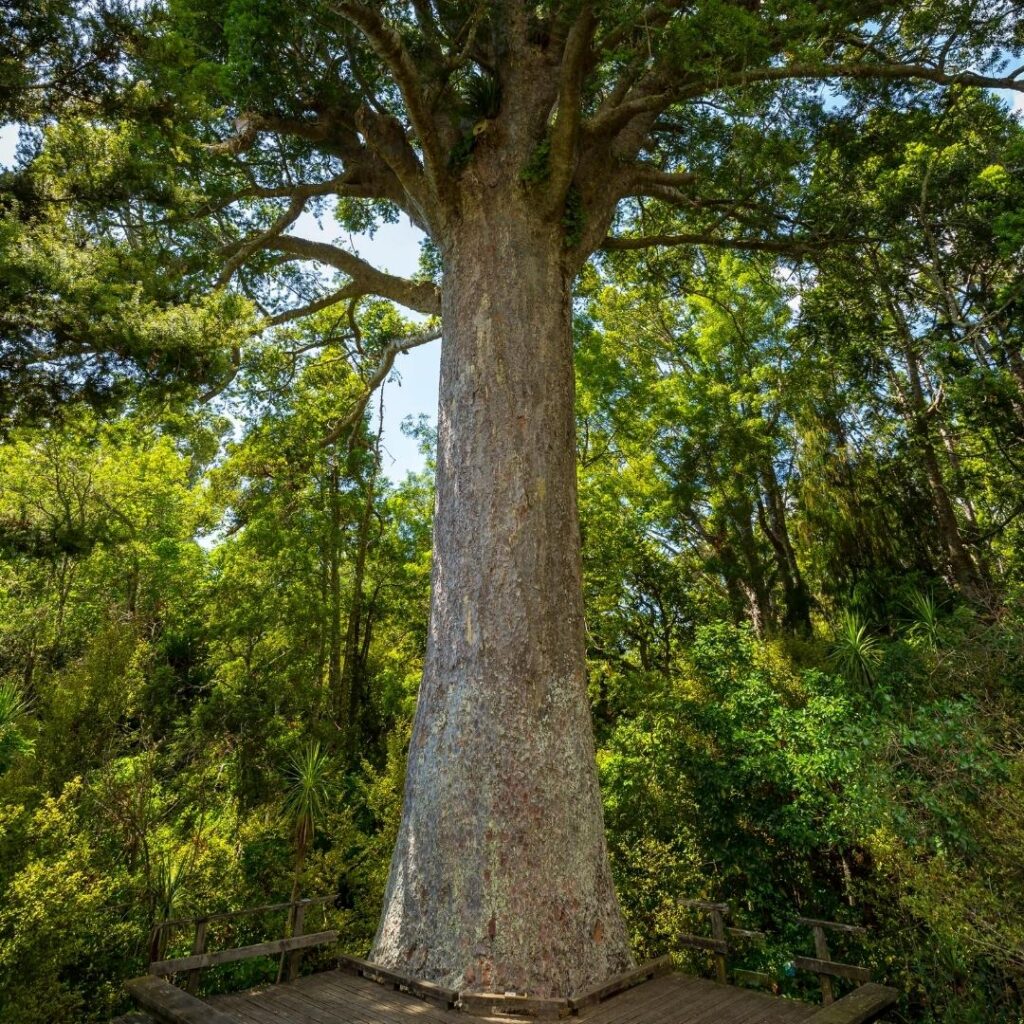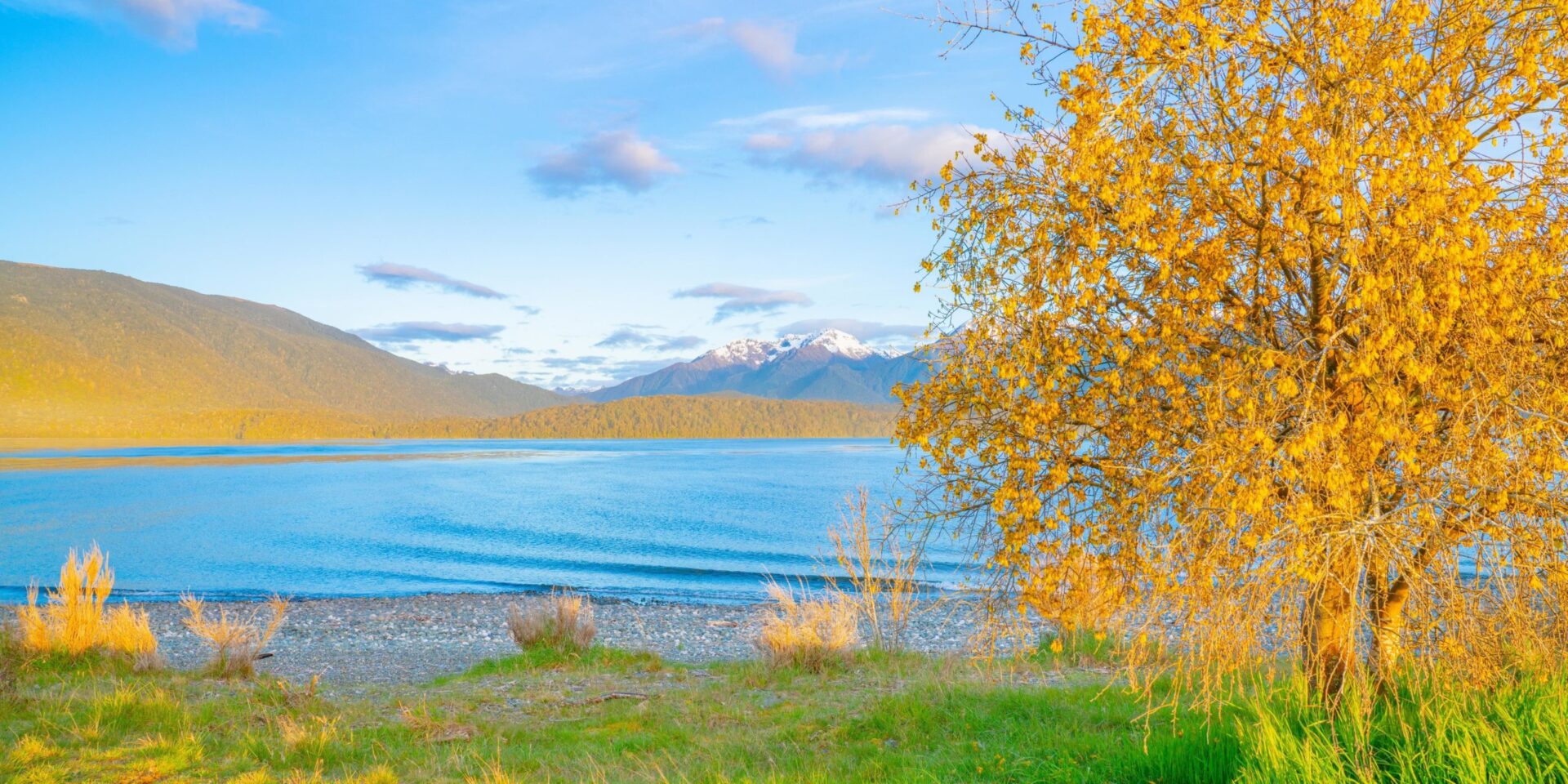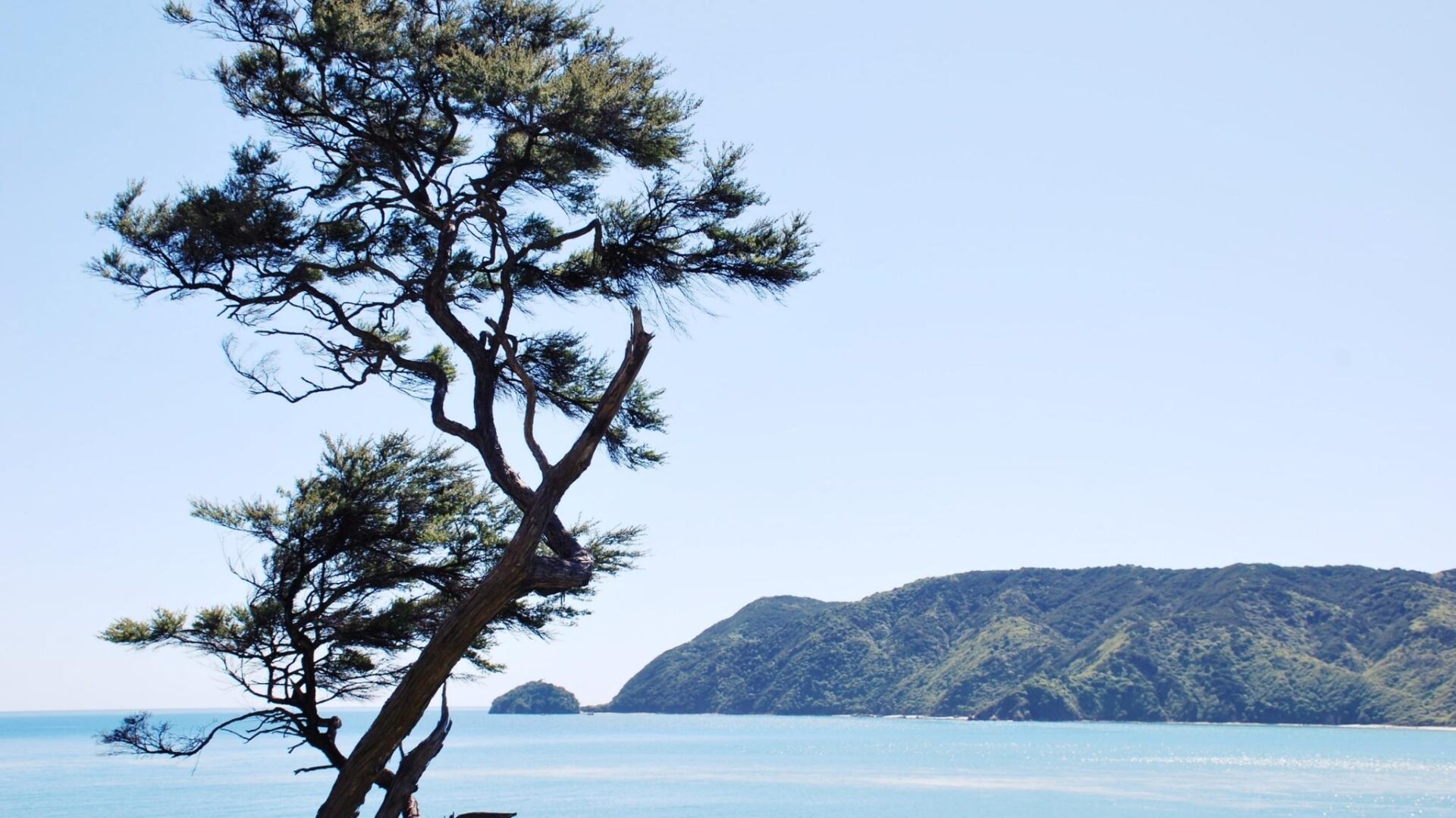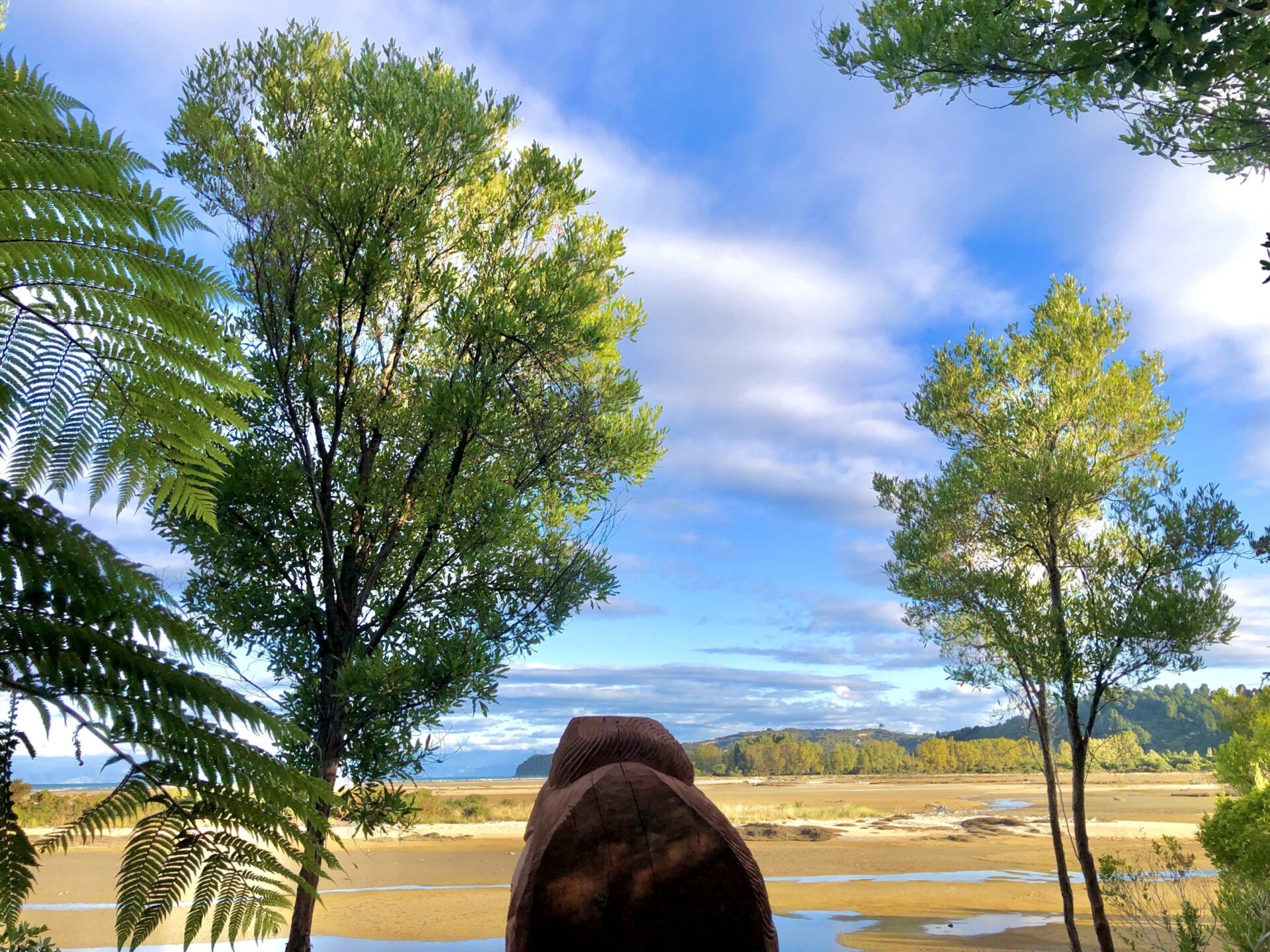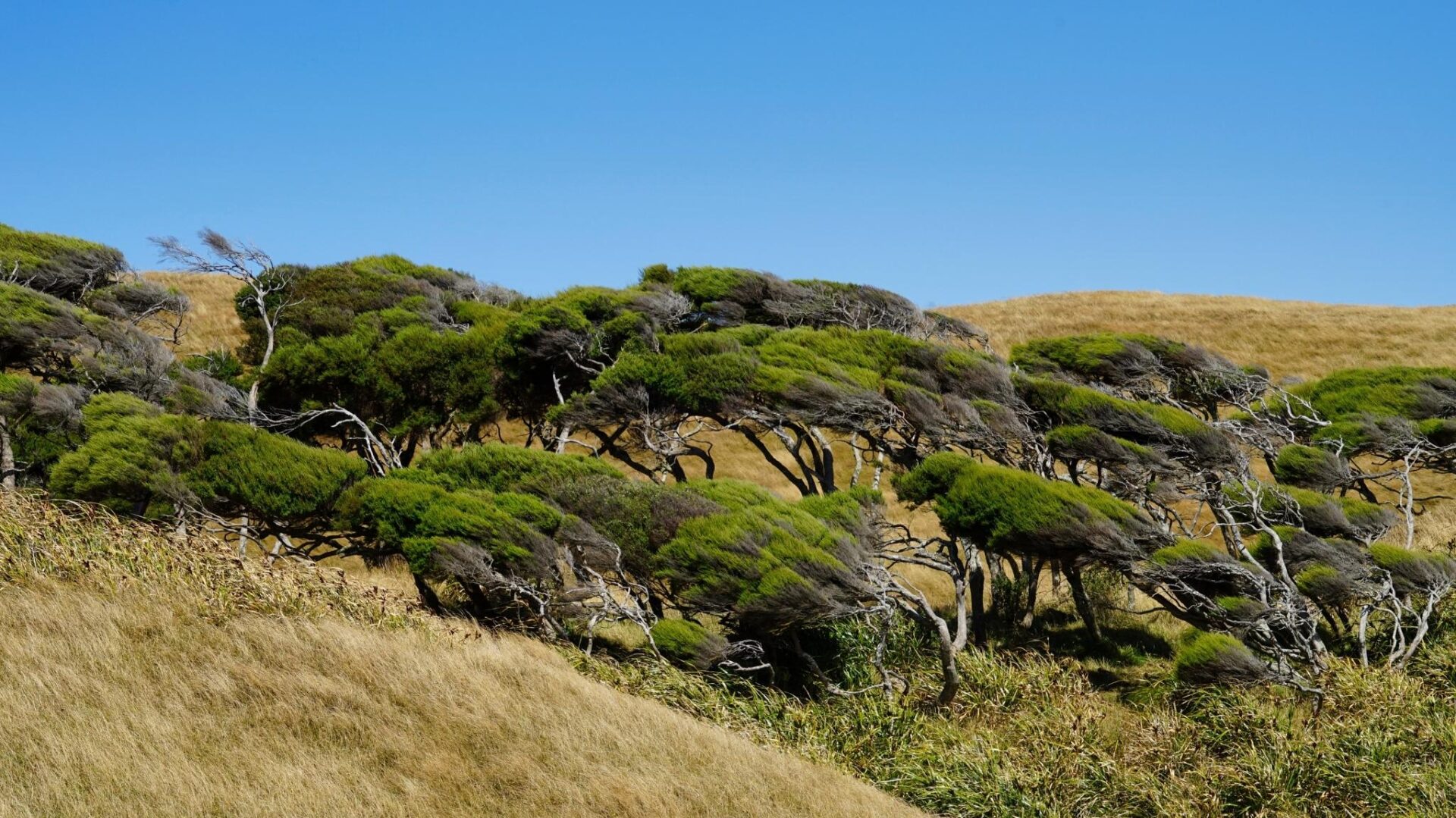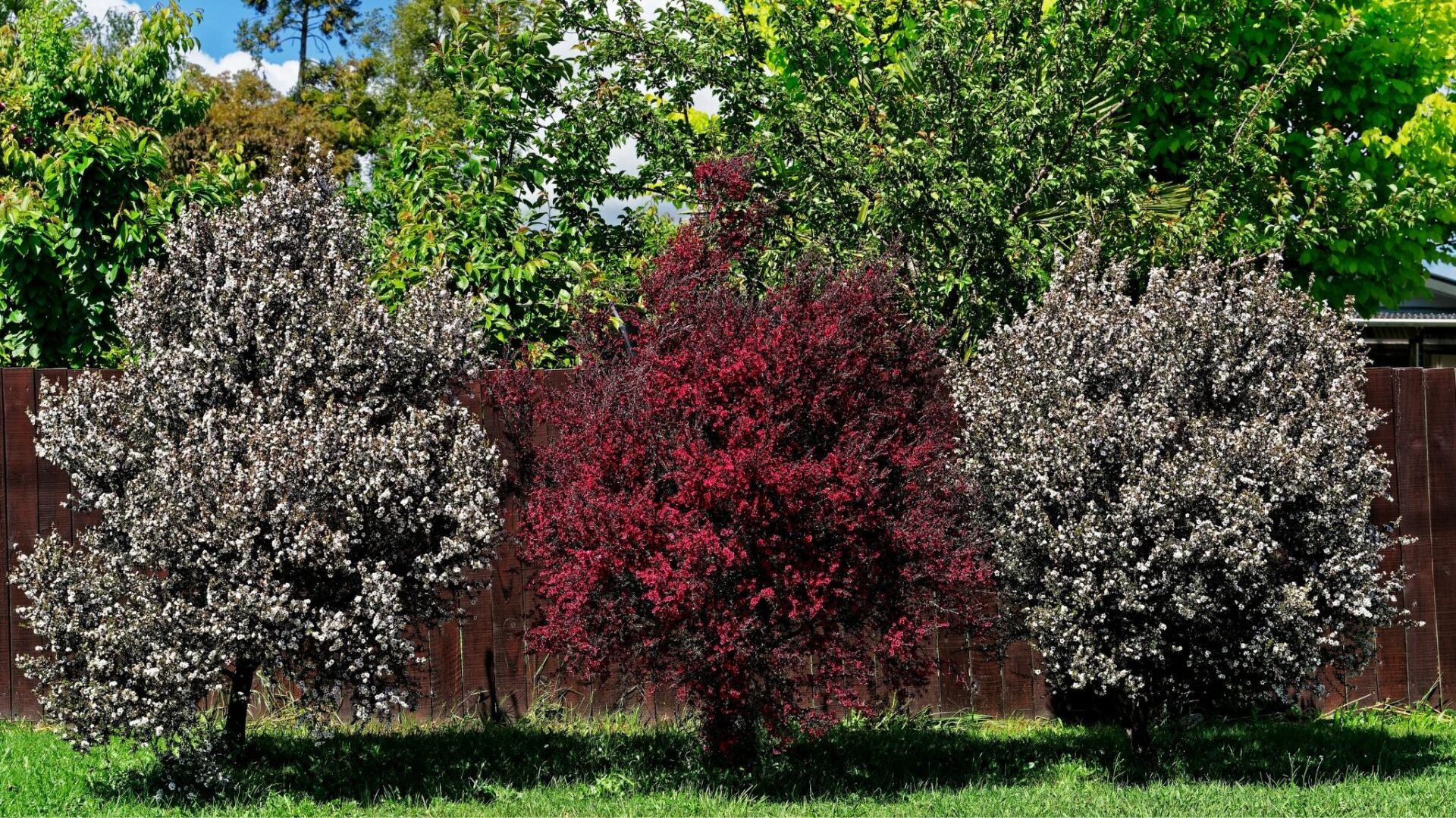The Timber Giant
The slow growing Kauri is one of the ancient podocarps that is among the tallest and oldest in the world. The scientific family, ‘Araucariaceae’ of this tree predates back to the Jurassic era around 150m years ago and is found only in the Southern Hemisphere. Of the Agathis Genus, there are only 20 species of which New Zealand only has one. The Kauri tree, Agathis australis. This slow growing family of trees is surviving now in a new world of fast growing, flowing plants referred to as angiosperms, which make up 80% of all plants on earth.
Its huge trunk being free of branches means that a huge volume of quality timber is available per trunk. Of the estimated 1,215,000 hectares of original Kauri forest it is estimated that only 142 hectares remains. A single tree can be both male and female and will take around 30 years to become mature, dropping papery cones which a relatively low germination rate.
One of the greats
Kauri tend to dominate once established forming their own forest type. The kauri will drop acidic leaf litter changing the soil composition around it to suit plants that have a lower nutrient requirement. i.e. the slower growing trees, over these fast up-starts! This generally encourages plants such as mingimingi, kauri grass and mapou to dominate over things like nikau or supplejack.
Being one of the largest trees in the New Zealand forest it is little wonder how Kauri has taken such an iconic seat. The early settlers to New Zealand must have watched on in awe as these gigantic virgin forests dominated the upper North Island. Grand waka where carved out allowing for hundreds of people to travel at once, and great stories are crafted around the Kauri’s legacy along side the mighty Totara.
Due to the vast quantity and quality (strong, light and straight) of timber per log, it was used heavily in construction during early European migration. Particularly in the local Auckland region and was even heavily exported including to San Francisco after the 1906 earthquake. Due to the amount of clear trunk and strong, lightweight properties it served as a great source of timber for ship masts.
The Gum Rush!
The gum has an oil like quality that was harvested for making torches at night as well as keeping insects at bay. The remains of this burnt gum/resin was used to create the black ink for tattooing. During the 1850’s to 1900 there was something of a fossilised gum rush, as it was highly valued as a varnish. So much so, that it became New Zealand’s largest export, more so than flax, wool, gold or timber.
Kauri Dieback
After the Kauri forests where decimated during the 19th century development of New Zealand, they have now run into a new threat that is causing real issues. There is a water borne mould called Phytophthora agathidicida which will infect the trees roots, disrupting the ability for the tree to absorb water and nutrients.
This is currently 100% fatal to the kauri at present as there is no know cure. The symptoms include the tree loosing all of its leaves, the plant bleeds gum profusely and the root and base of the tree begin to rot until it collapses.
Unfortunately it is spread by the movement of animals/humans around the forests. Shoes are a common vector as they may pick up infected dirt in one area and spread it to other. Great care must be taken to limit the spread of the Kauri Dieback.
The largest Kauri in the world
The Tane Mahuta stands at an impressive 51.2m tall with a girth of 17.2m and is estimated to be over 2,100 years old. It is free of any branches for the first 18m of its trunk. It is understood that the Kauri will drop it’s lower branches and large flakes of bark as it continues to mature, perhaps to get rid of any epiphytes such as the Northern rata. The bark that falls from the Kauri will mulch down to provide a great source of nutrients for the tree once again!
Naturalised area
The Kauri forests dominated the upper North Island down to around Hamilton. They will grow up to about 600m in altitude. This being said, kauri can basically grow anywhere in New Zealand although they do not seemed to have ever moved further South. Ancient records show that up to 4 different kauri forests have dominated and then decayed over the centuries in Northland with remains found at depths of up to 100m!
Planting Instructions
Kauri trees prefer well-drained soil and full sun, but will tolerate partial shade. To plant a kauri tree, follow these steps:
- Choose a location with well-drained soil and full sun or partial shade.
- Dig a hole that is twice as wide and just as deep as the root ball.
- Remove the tree from its container and loosen any tangled roots.
- Place the tree in the hole and make sure it is level.
- Backfill the hole with the soil you removed, tamping down gently to remove any air pockets.
- Water the tree thoroughly and deeply, making sure the soil is saturated.
- Create a well around the base of the tree to hold water and mulch with a 2-3 inch layer of bark or leaves to conserve moisture.
- Water the tree regularly, making sure to soak the soil to a depth of 10-12 inches.
With proper planting and care, your kauri tree will thrive and become a beautiful feature in your landscape.

